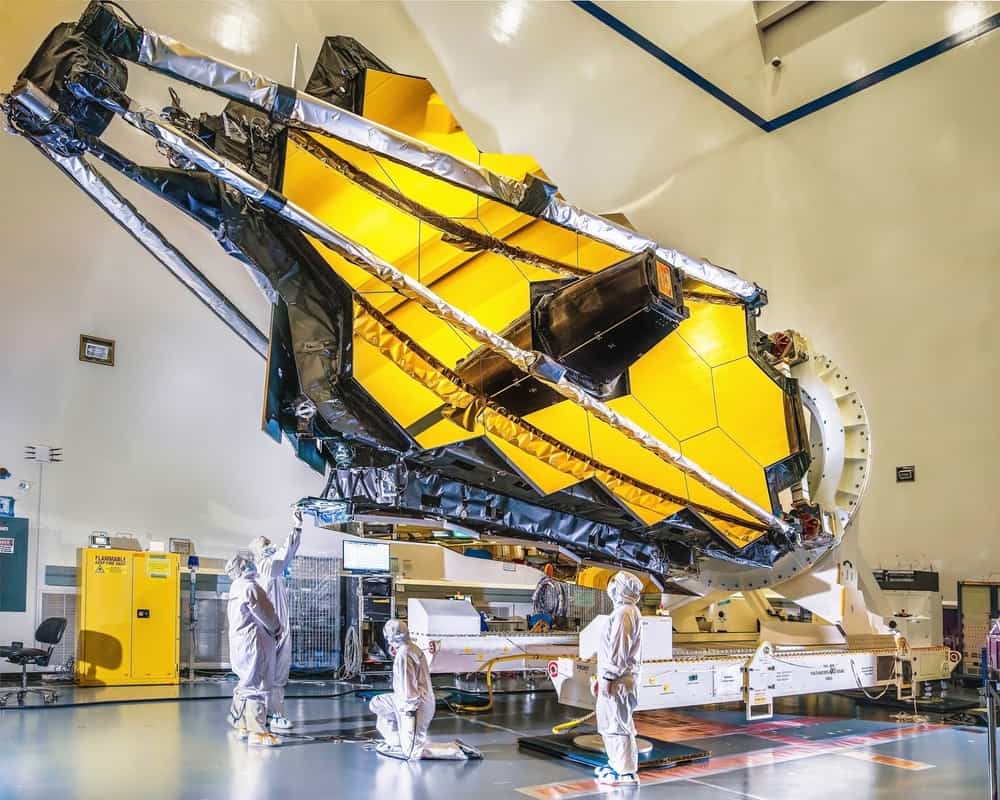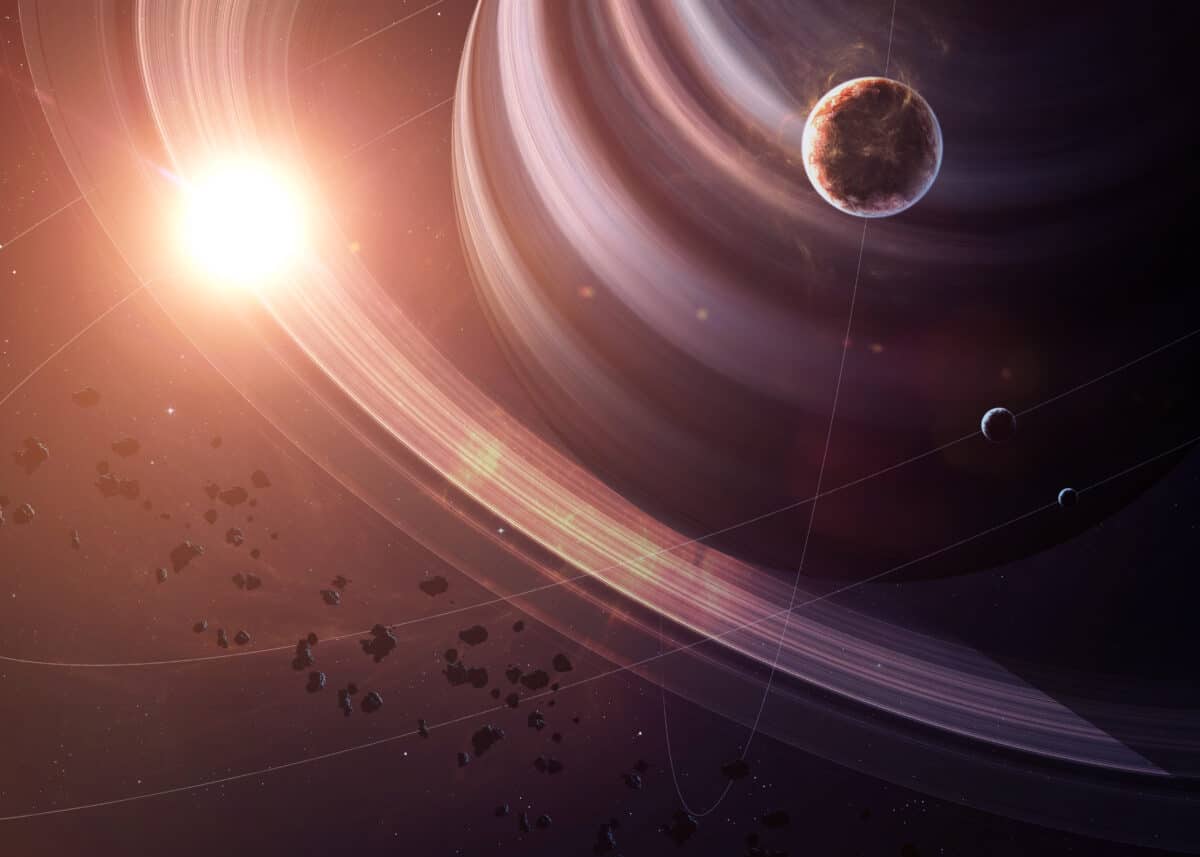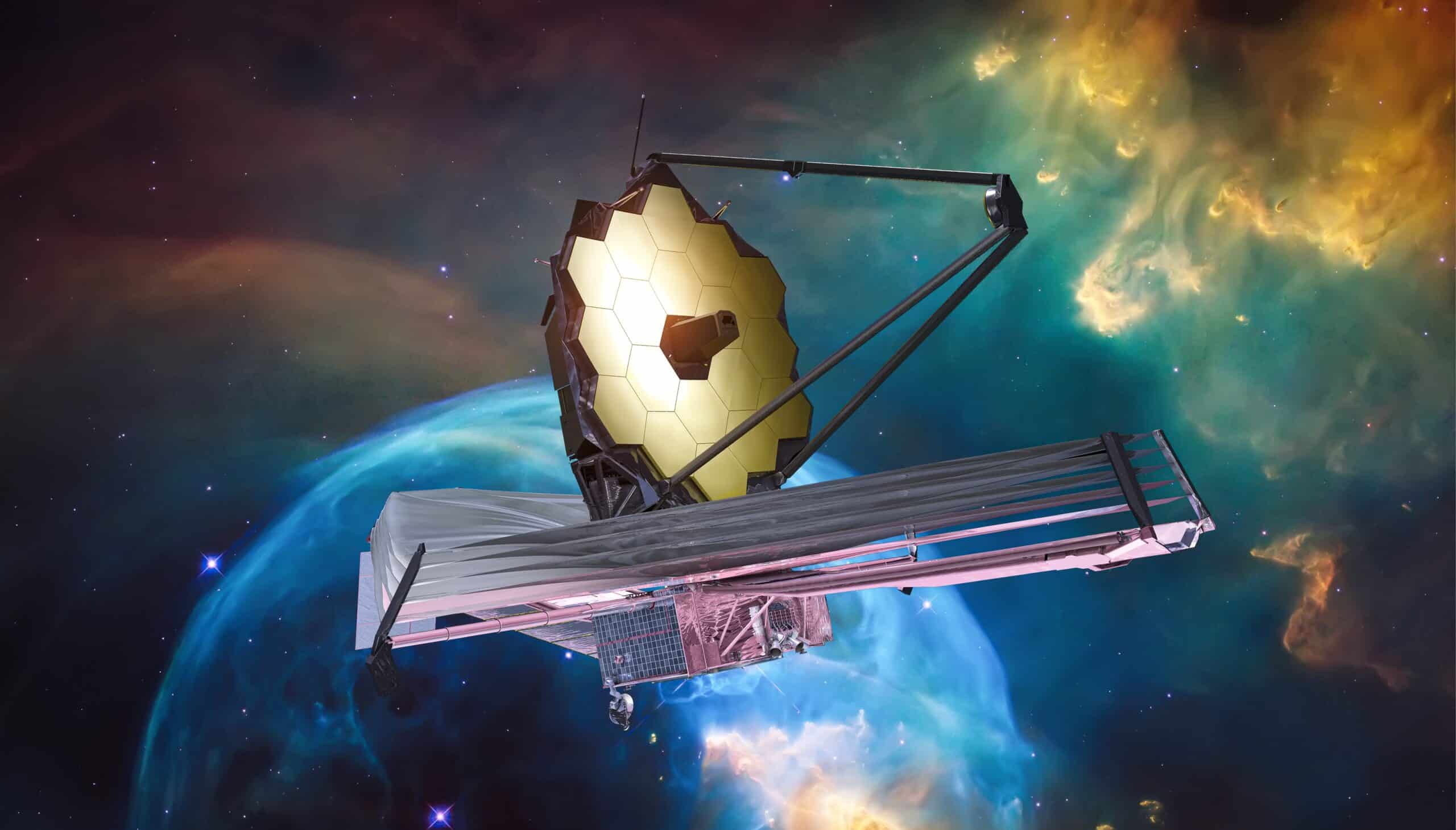3…2…1… and lift off! But, how much did launching the James Webb Telescope cost? You’ll know that NASA launched a new telescope into space unless you’ve been living under a rock. On December 25, 2021, the James Webb Space Telescope was launched from the ESA’s (European Space Agency) spaceport in French Guiana.
This impressive feat was organized by NASA, ESA, and the Canadian Space Agency. The James Webb Space Telescope conducts infrared astronomy with its optical telescope and high-resolution, high-sensitivity instruments.
All that bling allows it to view objects too old, distant, or faint for other telescopes to pick up (for example, the Hubble Space Telescope). We know that placing such a large and complex object in space wouldn’t be cheap. What makes it so complicated, and how much did this project cost? Let’s find out, shall we?
James Webb Space Telescope Specifications
This is just a quick add-on to the more in-depth explanation below, but we recommend you glance through these specifications, as we’ll be referring to them later.
| Launch Date | December 25, 2021 |
| Launch Site | Centre Spatial Guyanais, French Guiana. |
| Operator | NASA/ESA |
| Mission Type | Astronomy |
| Mission duration | 1 year, 3 months, 4 days (ongoing) |
| Manufacturer | Northrop Grumman, Ball Aerospace, L3 Harris |
| Launch Mass | 6,500 kg (14,300 lb) |
| Power | 2 kW |
| Rocket | Ariane 5 ECA |
| Reference System | Sun-Earth L2 orbit |
| Regime | Halo orbit |
| Main Telescope | Korsch telescope |
| Diameter | 6.5m (21ft) |
| Wavelengths | 0,6-28.3μm (orange to mid-infrared) |
| Cooling System | Passive and cryocooler |
What Is So Crucial About the James Webb Space Telescope?
Size and Power
First of all, It’s enormous! They had to literally fold the thing like origami to fit it inside the rocket. The telescope is the largest humanity has built, taller than a three-story building and longer than a tennis court. Unbelievable, right?
Don’t worry, as once launched into space, the JWST unfolded to its intended shape. In addition to being the largest telescope ever built, the James Webb Space Telescope is also the most powerful.

This telescope includes a whole laboratory inside of it, approximately the size of a basketball court. Start adding all these things to the bill! The telescope can see images of some of the first galaxies formed, just a few million years after the actual universe came into being.
Its power allows it to look inside dust clouds, nebulas, and to the furthest points in the universe. It will be able to see where and how new stars and planets form and examine the atmospheres of planets orbiting other stars.
Sunshields
The JWST’s cameras and mirrors are susceptible to the sun’s heat, so a sun shield was built to protect them and the other instruments. This sun shield is made up of five layers of Kapton E film, and it’s coated with aluminum on both sides.
To reflect the Sun’s heat back into space, NASA added a layer of doped silicon. The side facing the Sun and the shaded side have a difference of more than 600 degrees!
Mirrors
To see and capture the amount and kind of images we mentioned above, the James Webb Space Telescope (and all the other space telescopes) uses a particular type of mirror. A telescope’s mirrors are curved to gather light from the night sky.
Their shape concentrates the light and directs it toward the measuring instruments. As mirrors are lighter and easier to smooth out than lenses, each mirror contains a thin layer of gold to help reflect infrared light.
As you’ve probably guessed, fitting an enormous, heavy mirror into a rocket is extremely difficult, let alone launching it into space. How did NASA manage it, then?
Engineers decided that instead of fitting one large mirror, 18 smaller, foldable ones could be combined into one large mirror by fitting them together like a puzzle.
A Bit of History…
So, how much did all of that cost? To start, you need to understand that the idea of the James Webb Space Telescope began back in 1984. The Space Science Board was interested in constructing the next-generation infrared observatory and placing it in orbit.
At that time, they had calculated that the cost would be around 4 billion dollars, which would be approximately $10 billion in 2020 dollars.
Then, in the late ’90s, NASA considered a more modest design. The aim was to spend 1 billion dollars over a 10-year construction plan. The thing was that as more time passed, the design was expanded, funding for contingencies was added, and there were a lot of scheduling delays. Science tends to happen this way.

.
When the project was formally confirmed for construction in 2008 after a preliminary design review, they had gone over a billion dollars over budget. Despite passing the Critical Design Review with excellent grades on all tech matters in 2010, Maryland’s U.S. Senator Barbara Mikulski asked for an external review of the project.
This external review revealed that the earliest possible launch date would be in late 2015, with an added cost of 1.5 billion dollars. It also showed that this JWST project would need even more funding during 2011 and 2012.
If the launch date was postponed even more, the cost would increase even more. As a result, the United States House of Representatives appropriations committee voted to cancel the James Webb Space Telescope.
The Final Cost of the James Webb Telescope
The plan was to remove around 1.9 billion dollars from NASA’s budget. Almost one-quarter of this budget was for the James Webb Space Telescope. By this time, NASA had already spent $3 billion, and 75% of the JWST’s hardware was in production.
Believe it or not, the proposal was approved because the subcommittee considered the project mismanaged. Thankfully, support for the JWST popped up everywhere, causing Congress to reverse the cancellation plans and add 8 billion dollars to the funds.
A new program director came in and raised the schedule efficiency from 50% to 95%. The ESA and the CSA (the European and Canadian Space Agencies) added their share to this project and contributed approximately €700 million and CA$ 200 million.
NASA decided in 2018 to push back the launch to May 2020, or later, after the ESA determined a new launch window. A final cost estimate would come after that. In 2019 that cost was increased by 800 million dollars. Unfortunately, although everything was set to go, COVID happened in 2020, and everything was paused.
Finally, NASA launched the James Webb Space Telescope into space on December 25th, 2021, with a total budget of around 9.7 billion dollars. So, launching one of the world’s largest and most powerful telescopes into space required almost $10 billion.
Was it worth it? We believe the images taken by the James Webb Space Telescope and posted on NASA’s official website speak for themselves. What other wonders will this expensive project bring us? Only time will tell!
The image featured at the top of this post is ©Dima Zel/Shutterstock.com.

